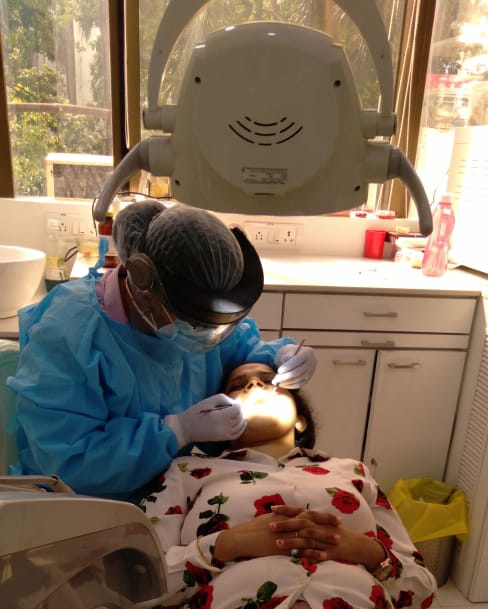
Gum Surgery: Understanding the Procedure, Benefits, and Recovery
Oral health is an integral part of overall well-being, and sometimes maintaining it requires undergoing procedures like gum surgery. Whether it’s to treat advanced gum disease (periodontitis) or improve the appearance of your gums, gum surgery plays a crucial role in restoring dental health. This comprehensive guide will explore the different types of gum surgery, when it’s needed, and what to expect during and after the procedure.
What is Gum Surgery?
Gum surgery, also known as periodontal surgery, involves surgical procedures to treat diseases and conditions affecting the gums and the structures supporting your teeth. It aims to restore the health, function, and aesthetics of the gums. Modern advancements in dental technology have made these procedures more effective and less invasive.
Common Reasons for Gum Surgery
- Gum Disease Treatment: Severe gum infection, known as periodontitis, can lead to gum recession, tooth loss, and damage to the supporting bone. Gum surgery is often necessary to address these issues.
- Gum Recession: This occurs when the gum tissue pulls away from the teeth, exposing the roots and increasing sensitivity.
- Pocket Reduction Surgery: Deep pockets between the gums and teeth can harbor bacteria, worsening gum disease. Surgery helps reduce these pockets.
- Gum Grafting: To treat gum recession or improve aesthetics, grafts of soft tissue are used to rebuild the gumline.
- Aesthetic Improvements: Procedures like crown lengthening enhance the appearance of your smile by reshaping the gums.
Types of Gum Surgery
- Flap Surgery (Pocket Reduction Surgery):
- The gum tissue is folded back to remove bacteria and tartar from the roots.
- The gums are then repositioned to fit snugly around the teeth.
- Gum Grafting:
- Tissue is taken from another part of your mouth or a donor source and attached to the affected area.
- This helps cover exposed roots and reduce sensitivity.
- Crown Lengthening:
- Removes excess gum tissue to expose more of the tooth, often for restorative or cosmetic purposes.
- Laser Gum Surgery:
- A minimally invasive option that uses lasers to target infected tissue and bacteria.
- Laser procedures are precise and offer faster recovery times.
- Regenerative Procedures:
- Used when the bone supporting your teeth has been damaged.
- Techniques like bone grafts or tissue regeneration stimulate growth and repair.
What to Expect During the Procedure
- Consultation and Diagnosis:
- Your dentist or periodontist will conduct a thorough examination and use imaging to plan the surgery.
- Anesthesia options, such as local or general, are discussed to ensure comfort.
- The Surgery:
- Depending on the type of gum surgery, the procedure may take 1-2 hours.
- Advanced tools and techniques are used to ensure precision and effectiveness.
- Post-Surgery Care:
- Follow instructions like avoiding solid foods, maintaining oral hygiene, and attending follow-up appointments.
Benefits of Gum Surgery
- Improved Oral Health: Treating gum disease prevents further complications like tooth loss.
- Enhanced Aesthetics: Reshaping or restoring gums creates a more balanced and appealing smile.
- Reduced Sensitivity: Covering exposed roots decreases tooth sensitivity.
- Prevention of Future Issues: Addressing gum problems early avoids more invasive treatments later.
Recovery and Aftercare
- Immediate Post-Surgery:
- Some swelling and discomfort are normal; prescribed painkillers and ice packs help manage this.
- Stick to a soft, cold diet for the first few days.
- Long-Term Care:
- Follow your dentist’s guidelines for cleaning and caring for your gums.
- Regular dental visits ensure proper healing and monitor oral health.
- Lifestyle Adjustments:
- Quit smoking, as it hinders recovery and contributes to gum disease.
- Maintain a balanced diet to support healing.
Risks and Complications
While gum surgery is generally safe, potential risks include:
- Infection: Proper care reduces the risk of post-surgery infection.
- Bleeding or Swelling: Temporary but manageable with medication.
- Sensitivity: Gums may feel more sensitive during the healing process.
Conclusion
Gum surgery is a vital step in addressing serious oral health issues and achieving a beautiful smile. From treating gum disease to improving aesthetics, these procedures offer long-lasting benefits when performed by skilled professionals. Remember, maintaining good oral hygiene and regular dental check-ups can often prevent the need for surgery.
By choosing advanced options like laser gum surgery or gum grafting, patients can experience improved outcomes and quicker recovery. Consult your dentist or periodontist to determine the best treatment plan for your needs. A healthier, more confident smile is within reach!
Best Dentist in Ghatkopar East Mumbai India Best Dental Clinic in Ghatkopar East Mumbai India Best Dentist in Ghatkopar East Mumbai India Best Dental Clinic in Ghatkopar East Mumbai India Best Dentist in Ghatkopar East Mumbai India Best Dental Clinic in Ghatkopar East Mumbai India Best Dentist in Ghatkopar East Mumbai India Best Dental Clinic in Ghatkopar East Mumbai India
